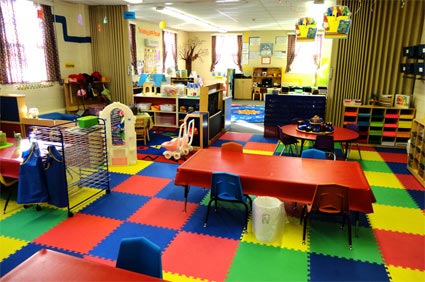Children need to develop interest for writing in order to learn it. Some interesting activities can help to develop love for writing in them. Read on to find some interesting ways to teach your child to write.Your child has just started preschool, and her homework now consists of writing practice. Young children cannot learn writing overnight. They need a lot of practice. A child’s vocabulary expands during their preschool years and they probably know their alphabets and numbers but now it is time to write them down. They have begun to understand symbols, letters and numbers.
They might start by their own thoughts with blank paper and crayons. However, teaching your child is not as simple as not all children learn at the same pace. Therefore, here are some interesting ways which will develop interest in your child to write.
1. Use Fun Writing Materials
Children love colourful things and they also get easily bored. Get her a chalkboard, dry erase board or a magna doodle with golf pencils, broken crayons, a short, stubby pencil or a piece of chalk. She can re-write several times at the same place which will retain her interest. Allow the child to learn at her pace and do not rush her to move on to the next level. Alternatively, toddlers can use their pointerfinger or small sticks to write in rice, talcum powder, sand and clay. Allow her to scribble to ensure free hand movement.
2. Use a Salt Tray
A salt tray writing activity is one of the simplest ways to spark a child’s interest in
writing. The requirements are extremely simple – any kind of tray, salt and an instrument of writing such as the end of a pencil or paintbrush, chopstick or even your fingers. Spread salt in a tray and provide your child with hours of writing practice and entertainment. Not only can your child write letters and numbers on it, she can doodle and draw on it as well.
3. Buy or Make Her a Pencil Grip
When you feel that your child is ready for using a pencil, make her draw shapes and lines before proceeding to
alphabets and
numbers. If your child is unable to hold the pencil properly, use a pencil grip. Made of rubber, silicone or gel material, a pencil grip can help the child grip the pencil properly. You can make one at home by rolling a piece of plasticine into a ball. Poke a pencil through in the middle and then hold the pencil to make the fingerprint indents.
4. Highlight Lines in Her Notebook
While learning to write the alphabet, children have trouble staying between the lines with tall letters like “H” and letters with tails like “p”. To make these lines easier, use different coloured markers and highlight the top, bottom and middle lines on lined paper. For example, this can help your child remember that tall letters start at the blue line, small letters stay between the orange and green lines and letters with tails extend to the green line. You can also use textured surfaces and raised line paper and trace the lines with school glue and let them dry to create a raised surface with writing.
5. Use a Stick
Children are often confused of how much space to leave between words. Teachers might write notes that she leaves too much or too little space between writing. To tackle this problem, give your child a clear stick which is as wide as the space you would like your child to leave between two words. Whenever she writes, tell her to put stick down at the end of the word. The next word will start on the other side of the stick. Alternatively, she can also use her pencil to measure the gap between words. After some practice, the child will get an idea of the proper space between words.
These ways are very homely and the materials can be found in almost every Indian home. They take very less time to execute but can be very beneficial to your child. They need time to develop their fine
motor skills so be patient and encourage them by using colourful visuals, fun activities and giving cuddles. But remember practice is very important to perfect her writing skills.
How to teach children to write? What kinds of writing materials are helpful for teaching children to write? How to develop love for writing in children? Discuss here. 





























